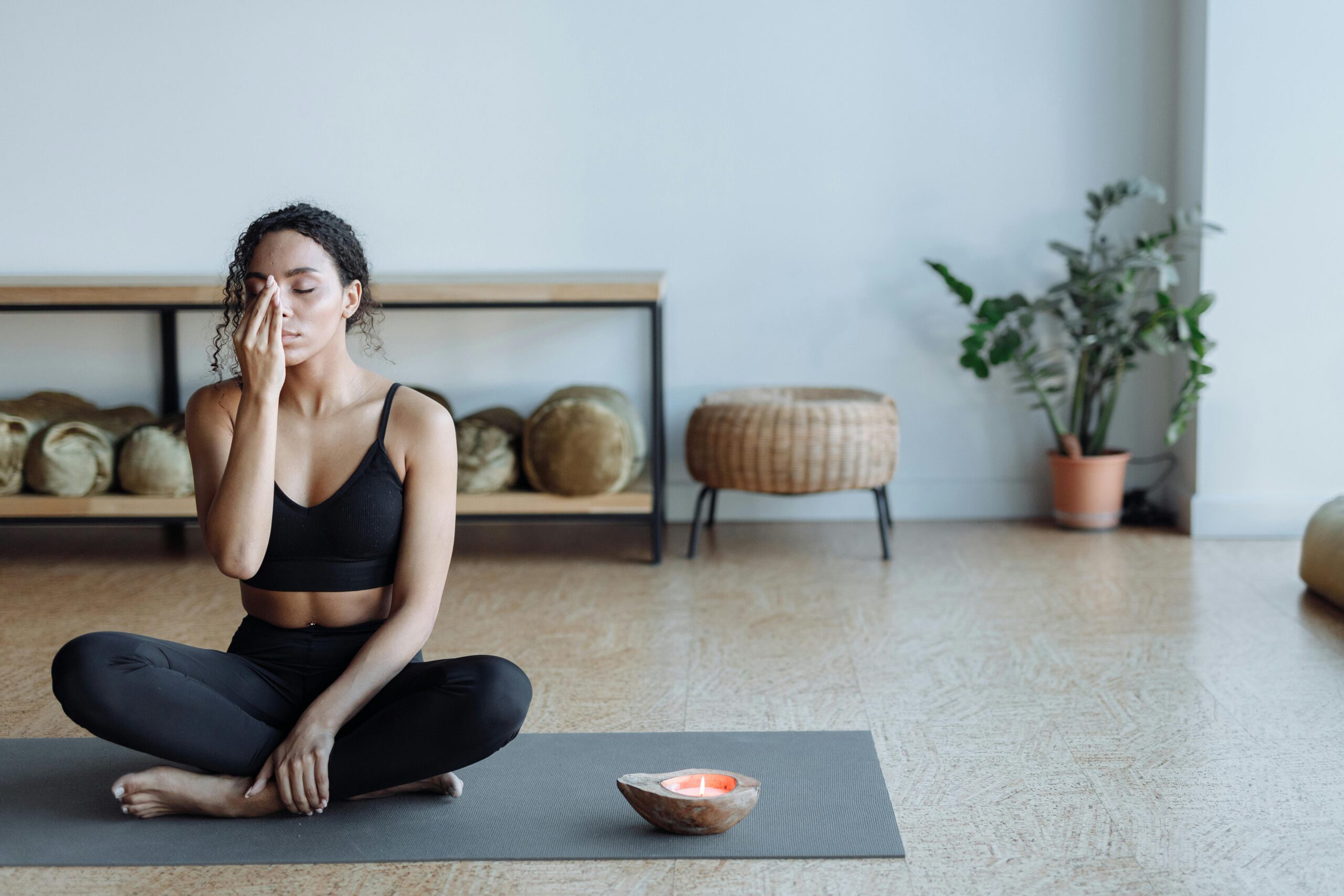Life can get overwhelming. Between deadlines, responsibilities, and constant noise, it is easy to feel like your mind and body are always on edge. But sometimes, the simplest way to slow down and reset is by focusing on something you do every day: your breathing.
Guided breathing techniques are an easy, free way to calm your thoughts, lower stress, and feel more in control. Whether you are dealing with anxiety, gearing up for a big day, or just trying to catch a break, the right breathing practice can make a real difference, often in just a few minutes.
In this article, we’ll go over five guided breathing techniques that can help you relax instantly. These techniques are beginner-friendly, backed by science, and easy to do wherever you are.
Why Guided Breathing Techniques Work?
Before we get into the actual techniques, let’s take a moment to understand why guided breathing is such a powerful tool for both your mind and body.
Breathing is one of the few automatic functions in the body that you can also control voluntarily. This gives it a unique connection to the nervous system, specifically the autonomic nervous system, which regulates our heart rate, digestion, and stress response.
By slowing down your breath and making it more intentional, you send a message to your brain that everything’s okay. In response, your body dials down the release of stress hormones like cortisol and shifts into a calmer state. This is known as the parasympathetic nervous system, or “rest and digest” mode.
This isn’t just a wellness trend or ancient practice. It is backed by science. Research shows that guided breathing techniques can:
- Improve heart rate variability (a key indicator of resilience and recovery).
- Lower blood pressure and reduces the risk of cardiovascular issues.
- Support emotional regulation and help manage anxiety or panic.
- Improve focus, sleep quality, and overall sense of calm.
In other words, the way you breathe has a direct impact on how you feel physically, mentally, and emotionally. Guided breathing gives you structure and support as you build this habit, especially if you are new to breathwork or struggle to focus on your own.
What are the Top 5 Guided Breathing Techniques?
Now that you know how powerful breathwork can be, let’s dive into the techniques you can start using. These methods are beginner-friendly, take just a few seconds, and can be done anywhere, whether you are at home, at your desk, or winding down before bed.
1. Box Breathing
Let’s start with one of the most popular breathing techniques used by athletes, first responders, and even high-level executives when they need to stay cool under pressure.
Box breathing, also called square breathing, is a great technique for easing anxiety, improving focus, and finding calm during high-pressure moments. It’s a favorite among elite performers, from athletes to military personnel, because it’s simple, effective, and easy to remember.
How to do it:
- Inhale slowly through your nose for 4 seconds.
- Hold your breath for 4 seconds.
- Exhale slowly through your mouth for the entire 4 seconds.
- Hold again for 4 seconds.
- Repeat for 4 to 6 rounds.
Box breathing creates a predictable rhythm that regulates your nervous system and grounds your attention to the present. It is especially helpful when you are overwhelmed or need to reset your mood quickly.
Pro Tip: Try visualising a square as you go through each phase, it adds a mindfulness boost to the practice.
2. 4-7-8 Breathing
If you struggle with falling asleep, feel anxious, or just need to slow your racing thoughts, 4-7-8 breathing might be your go-to technique. Dr. Andrew Weil popularized this breathing technique, which is often referred to as a “natural tranquilizer” for the nervous system, and for good reason. Extending your exhale helps calm the mind, regulate emotions, and ease you into a relaxed state, which tells your body it’s safe to relax.
How to do it:
- Inhale through your nose for 4 seconds.
- Hold your breath for 7 seconds.
- Exhale slowly and fully through your mouth for 8 seconds.
- Repeat the cycle 4 times, and if it feels comfortable, gradually increase up to 8 rounds.
The secret in this guided breathing technique lies in the long exhale. It activates your parasympathetic nervous system, which helps reduce stress and bring a sense of calm. This technique also gives your mind something to focus on, making it easier to break the cycle of overthinking.
You can try this right before bed, when you are feeling overwhelmed, or even first thing in the morning to start your day with a calm and focused mindset.
3. Alternate Nostril Breathing
If you are feeling scattered or just need to clear your head, Alternate Nostril Breathing is a great one to try. It comes from yogic tradition and is all about helping your mind feel more balanced and steady.
People often use it before stress meditation or for a quick mental reset.
How to do it:
- Sit comfortably in a quiet space. Relax your shoulders and close your eyes if that feels good.
- Use your right thumb to gently close your right nostril.
- Inhale slowly and deeply through your left nostril.
- Close the left nostril using your ring finger. Lift your thumb from the right nostril and exhale fully.
- Inhale through the right nostril.
- Switch again. Close the right nostril with your thumb, open the left nostril, and exhale slowly.
- That’s one round. Aim for 5 to 10 rounds at your own pace.
This practice helps balance oxygen flow between both sides of the brain, leaving you feeling calmer, more focused, and mentally refreshed. It is handy when trying to get into a creative flow or clear your head before a big task.
Quick Tip: If your nose is congested or you are feeling unwell, it is best to skip this one until you are breathing comfortably through both nostrils.
4. Diaphragmatic Breathing
When we are stressed or anxious, our breathing gets shallow, which is what we call chest breathing, and it does not really help our body relax. Diaphragmatic breathing, or belly breathing, is the opposite. It is a gentler, more natural way to breathe that helps you slow down, erase tension, and take in more oxygen with each breath.
This technique taps into your diaphragm, the large muscle just below your lungs, and helps you breathe more deeply and calmly. It’s a go-to method for relieving stress, slowing your heart rate, and calming your nervous system without needing anything but a quiet spot and a few minutes.
To do the diaphragmatic breathing technique:
- Lie flat on your back or sit upright. Be sure to find a comfortable and safe space.
- Place one hand on your chest and the other on your belly.
- Gently inhale deeply through your nose, expanding your belly. Make sure that the belly expands, not your chest.
- Exhale slowly with a pursed lip. Feeling your belly deflate.
- Continue the cycle for 5 – 10 minutes or until relaxed.
Diaphragmatic breathing is often used in mindfulness exercises, yoga, and even physical rehabilitation because of how effectively it reduces tension and rests your body’s stress response. It’s perfect for winding down at the end of a long day or during moments when your body feels tight or your mind is racing.
To make the experience even more relaxing, try pairing this with soft instrumental or ambient music. You can also explore guided audio tracks to help you stay focused as you practice.
5. Resonance Breathing
This one’s all about finding your rhythm, literally. Resonance breathing, also called coherent breathing, is a steady, slow-paced technique that helps bring your body and mind into sync. It is often used during meditation or recovery, and it’s especially great if you are looking to manage stress or boost your focus long-term.
The goal here is to breathe at a rate of about 5 to 6 breaths per minute, which is slower than most people breathe naturally. When you stick to that rhythm, something cool happens: your heart rate and breathing start working together in a more balanced way. This improves HRV (Heart Rate Variability), a fancy term for how well your body handles stress and bounces back from it.
How to do it:
- Slowly, inhale for 5 seconds.
- Gently, exhale through the mouth for 5 seconds.
- Continue the cycle for 10-20 minutes.
- It’s best to use a guided breathing app to help stay in rhythm.
Resonance breathing taps into your body’s natural systems, helping your heart, lungs, and brain work together in harmony. And when done regularly, it can really pay off. You will have better sleep, more focus, less anxiety, and an overall calmer vibe.
It’s one of the most science-backed breathing techniques. Whether you use it to start your day on the right note, wind down after work, or reset during a stressful moment, this method is a solid go-to.
How to Do the Guided Breathing Techniques Efficiently?
Breathing techniques are simple, but getting the most out of them? That’s where a few small tips can make a big difference.
If you are still confused about how to do the guided techniques efficiently, here’s how to make your breathing sessions work for you:
Find your quiet corner.
Look for a spot where you can breathe without distractions. It does not have to be fancy, just somewhere you feel safe and at ease.
It can be your bedroom, a quiet nook at work, or even sitting in your parked car will do the trick.
Use a timer or a breathing app.
Counting in your head can be distracting, especially when you are just starting. Try apps like Breathwrk or even a basic timer app that gives you gentle cues. This keeps you in rhythm without overthinking.
Stick with it.
You don’t need to breathe for hours. Just 5 to 10 minutes a day is enough to start noticing the difference.
Like any habit, it’s all about showing up regularly, even just for a few minutes.
Take it slow.
If one breathing technique feels too much, that’s totally okay. Adjust the timing or do fewer rounds. The goal is to feel relaxed, not dizzy or stressed.
Start small, then build up at your own pace.
Be present.
Try to really tune in while you breathe. Let go of your mental to-do list. Focus on the inhale, the exhale, and the feeling of your body settling. This little act of mindfulness can shift your entire mood.
Breathe when it feels right.
There’s no “perfect” time to do it. Morning, before a big call, during a stressful moment, or as you wind down for bed, it’s up to you. Use it whenever you need to reset. At the end of the day, this is your space to slow down and reconnect.
So go easy on yourself, keep showing up, and trust that each breath is a small step toward calm.
Breathe Your Way to Calmness
You don’t need to spend hours meditating or go on a silent retreat to feel better. Sometimes, all it takes is a few slow, intentional breaths.
Guided breathing techniques are a fast, free, and powerful way to reset your mood and reconnect with your body. Whether you are brand new to breathwork or just looking to deepen your wellness routine, these five techniques are a great place to start. They are simple, backed by science, and easy to fit into even the busiest day.
Pick one that feels right for you, take it slow, and let your breath do the rest. With just a few minutes a day, you will feel the shift, a calmer mind, a lighter body, and more grounded energy.
If you need a full routine around your breathing practice, check out our guide on quick morning workouts that pair mindful movement with mindful breathing.


